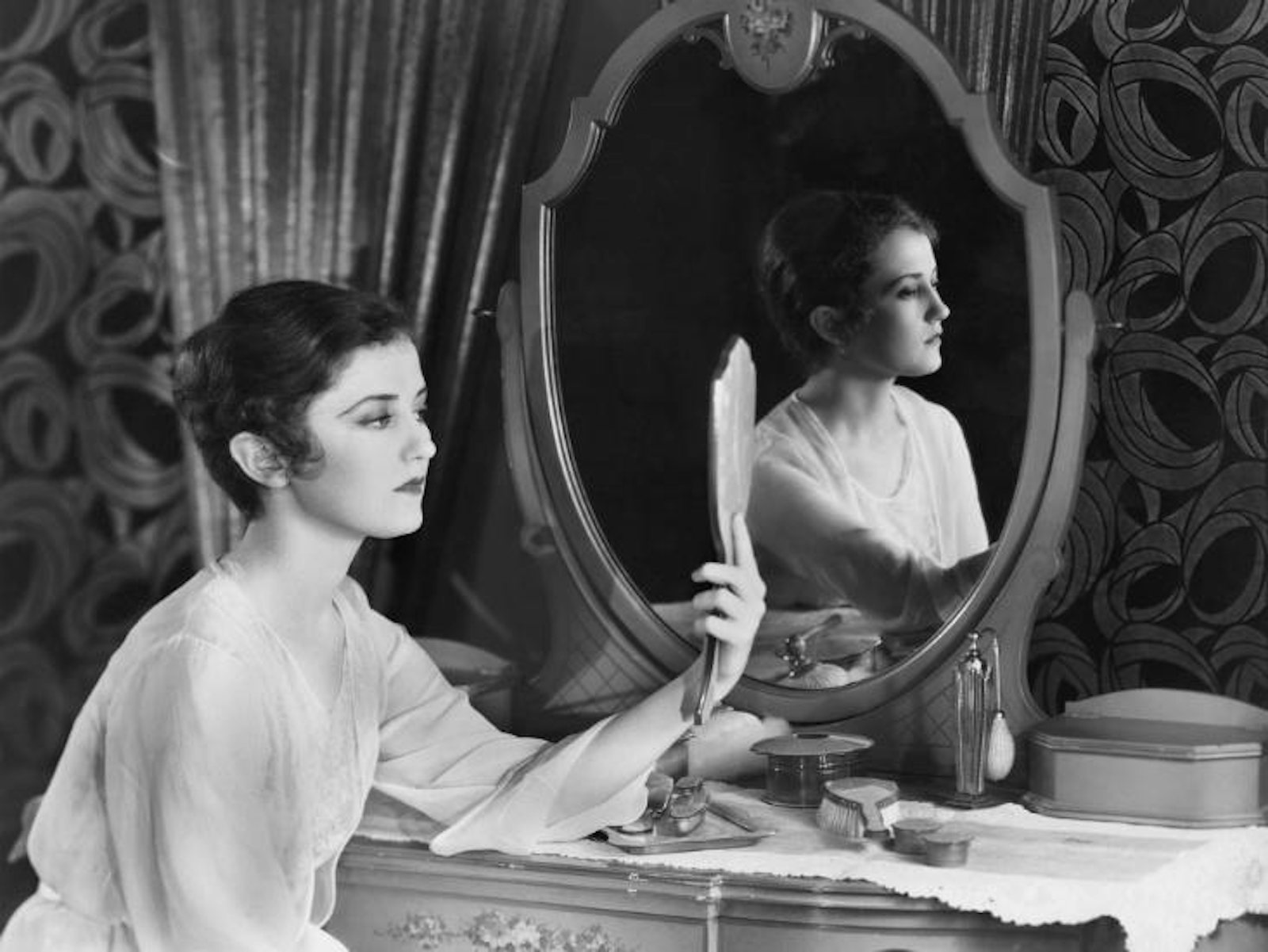When you look in the mirror, the image you see looks a lot like you—not exactly the same, because when you raise your right hand, your mirror-self raises its left. What’s more, the mirror image is merely an assemblage of reflected light, without a physical body behind it. Despite these differences, you can see an important connection between you and your reflection.
This type of mirror relation is a familiar and powerful form of symmetry. We can say that a Valentine heart is symmetrical because the left side is a reflection of the right. But the symmetry of your mirror image is different and deeper. A heart is symmetrical because the left and right side happen to have a similar shape. The symmetry between you and your reflection is due to the laws of physics. The nature of light requires your reflection to be symmetrical to you. It is an example of a powerful and subtle type of symmetry known as duality.
Duality is a connection between two things where the properties of one defines the properties of the other. For example, imagine a book lying on a table, with a nail taped to its front cover, pointing up. No matter how you hold the book, the nail will point outward from its cover. If you know what direction the nail is pointing, you also know the orientation of the book. If you know the orientation of the book, you know where the nail is pointing. Thus, there is a duality between the nail and book.
So does the the nail determine the orientation of the book, or does the book determine the direction of the nail? That seems to be a nonsensical question. The duality between nail and book isn’t about one object determining the orientation of the other, but about the connection that exists between two of the nail-and-book’s fundamental properties, neither of which is caused by the other. You could say the same thing about quantum theory when someone asks if light is a particle or a wave.
The duality between particles and waves is a central part of quantum theory. Light is clearly a wave: It has a wavelength that determines its color, and light waves can interact with each other to produce things like lasers. Light is also clearly a particle: It interacts with atoms as discrete photons; a single photon can be deflected like a billiard ball. Particle-wave duality means that quantum objects like light have a symmetry between their particle and wave aspects. They are particles with wave properties and waves with particle properties. They are both, and they are neither. The power of quantum theory is that you don’t need to distinguish between particles and waves. They are simply quantum objects with a duality between their particle and wave natures.
Does that mean that the universe is a hologram? Not quite. It means there is a duality…
Perhaps the most powerful duality in physics is known as the holographic principle. This principle is often misrepresented as the idea that the universe is actually a hologram, but it is more accurate to say there is a duality between a volume of space and the surface enclosing that volume. The holographic principle states that all the information contained within a region of space can be determined by the information on the surface containing it. Mathematically, this means the volume of space can be represented as a hologram of the surface, hence the idea’s name.
This idea is less crazy than it sounds at first. Imagine a hotel with a guard at the entrance. Since everyone entering or leaving the hotel must pass the guard, he can count the number of people entering or leaving to know how many people are in the hotel. Thus information gathered by the guard (at the surface) tells us about the number within (the volume). (This example is obviously much simpler than considering all of the information in a three-dimensional space, but it illustrates how this information could be imprinted on the surface.)
The holographic principle extends that idea to volumes and surfaces in general, and it applies to everything from black holes to cosmology. With a black hole, for example, we can’t observe the interior because the gravity near a black hole is too strong for light to escape. But the black hole has a “surface” known as the event horizon, and we could observe everything outside of that. So, from information near the event horizon, we can understand the interior of a black hole.
Does that mean that the universe is a hologram? Not quite. It means there is a duality: Ours is a Universe with hologram properties, or a hologram with Universe properties. Within the mathematical formalism, you don’t need to distinguish between one or the other, which is what gives the holographic principle its power.
Of course we came to this idea by looking in a mirror. Does the duality between us and our reflection mean that the image in the mirror is as real as us? In a way it does. Suppose the mirror-you were real (not just an image of you in a mirror, but a physical, mirrored version of yourself), and you merely the reflection. The meaning of left and right would be reversed, and the dials on your watch would move widdershins rather than clockwise, but the underlying physics would be the same. The duality between you and your reflection means we could just as easily describe the mirror Universe as we do our own.
Brian Koberlein is an astrophysicist and physics professor at Rochester Institute of Technology. He writes about astronomy and astrophysics on his blog One Universe at a Time. Find him on Twitter @BrianKoberlein.
Watch: Max Tegmark, a physicist at MIT, explains how a handful of numbers can describe the birth of the universe.

This classic Facts So Romantic post was originally published in May 2014.


























